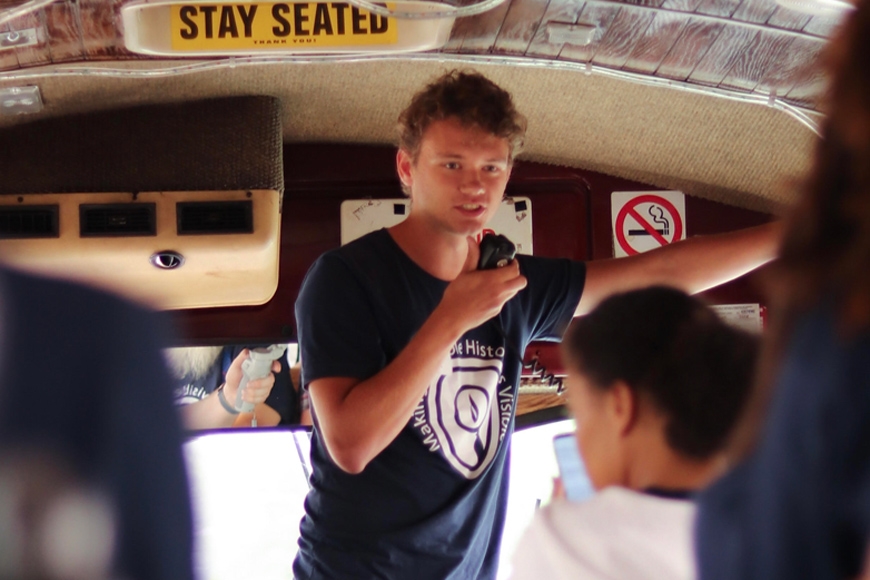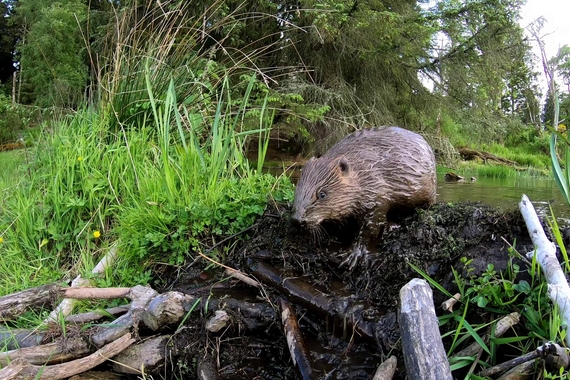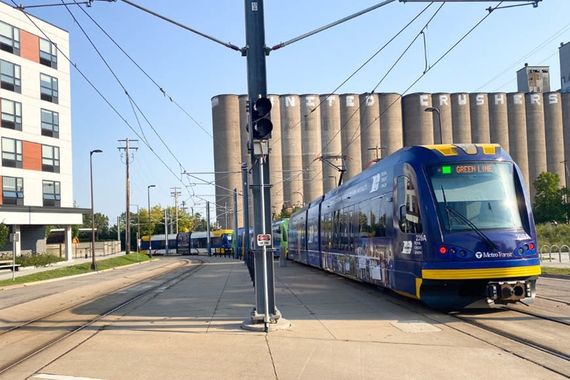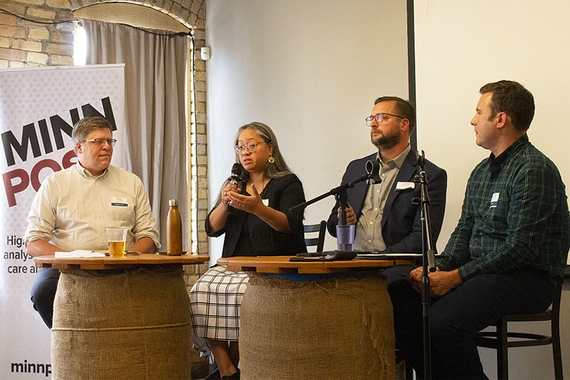Teaching History Through Maps
Where was your internship and how long did it last?
This past summer, I had the opportunity to work with the Making Invisible Histories Visible (MIHV) program through Omaha Public Schools (OPS). In 2021, MIHV hosted two different summer programs; the first was for one week and the second for two weeks. I worked as a teaching assistant for all three weeks and helped create some preliminary curriculum content.
What were your responsibilities?
In the first program, I was assigned a group of middle school students from across Omaha and worked with an OPS teacher to guide them through a former streetcar node in the Little Italy/Little Bohemia neighborhood in Omaha.
I helped organize meetings for the students to interview local community leaders, business owners, developers, and architects about the space’s history. I researched the area to provide source material for students to use as background in their challenge to show off some of the forgotten histories of the community. Students were also given lessons on topics like community development, redlining, and gentrification. They then presented what they learned and what they would do to improve the community to a live, virtual audience.
In the second program, I worked with teachers and other university students to teach OPS high school students about refugee communities within Omaha. My group of students created interactive maps of Somali refugee and migrant cultural spaces. We took students to local stores, restaurants, mosques, and refugee resettlement organizations in Omaha, where they interviewed community members and learned about Somali culture.
Finally, I helped students create ArcGIS story maps of the community they studied. The students then posted these online to connect native Omahans with Somali migrants.
What are the main takeaways from your internship experience?
This was an incredible experience as an urban studies and geography student. I was able to use what I’ve learned in school about things like GIS and planning to shine a light on some forgotten, and in my opinion, underappreciated communities. Besides this, it was rewarding to be able to teach younger students about the city they’re growing up in. Working with MIHV expanded my interests in community development and planning. It also helped me realize that knowing the cultural history of one’s community isn’t just interesting, it’s beneficial for all.
Which of the core career competencies do you think will help you the most in your future career?
For me, MIHV focused heavily on active citizenship & community engagement. Between this program and my time at the University, I’ve learned that being an active citizen and engaging earnestly with other communities is essential in creating the kinds of spaces that we all want to be a part of.
What is your dream job? How is your liberal arts education helping you reach your post-graduation goals?
It’s my dream to help build cities and communities that are better connected and that provide improved opportunities for everyone. I want to help plan for the future, whether that be through communicating ideas for change or helping design better communities.
If there’s anything I’ve learned from my degree, it’s that good planning requires us to understand how we impact and are impacted by the complexity of the world. My liberal arts education has shown me that there’s always more to learn and there are always ways to connect what you’re learning with what you’re doing.



